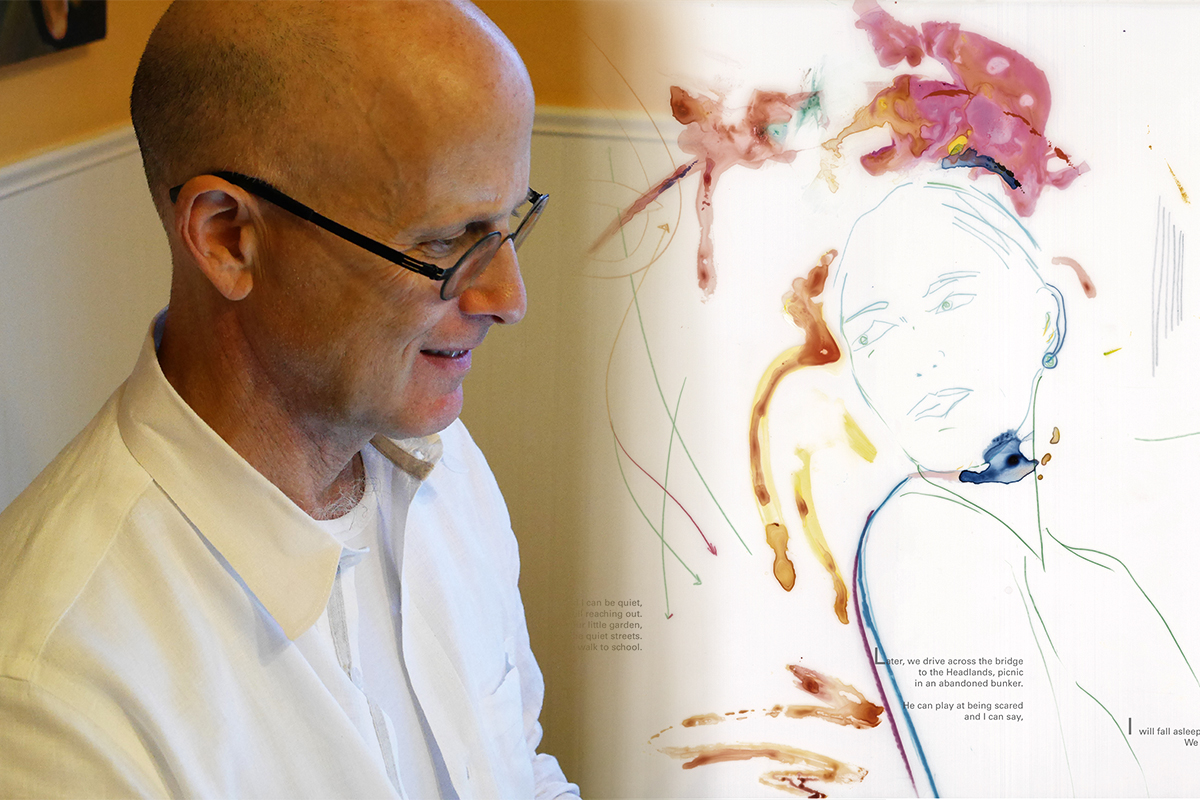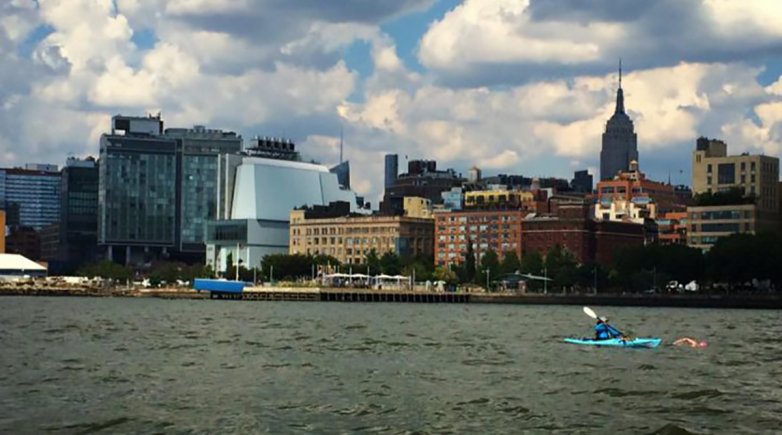Owen Brown

Painter Owen Brown ’73 and his longtime collaborator, poet Emily Wolahan, believe that art, and the act of creating it, can open hearts, instill compassion and spur action. So they set about creating a 24-foot-long scroll printed on translucent Dura-Lar plastic film. It features Brown’s paintings and Wolahan’s poetry — both inspired by the plight of the estimated 66 million refugees in the world today.
To share their artwork and increase awareness about those displaced, Brown and Wolahan produced eight copies of their Fieldwork Scroll to send to organizations who request one for display. “Our hope is that the scrolls will circulate throughout the U.S. and even, perhaps, Japan and Europe, thus helping to draw further attention to this humanitarian crisis,” Brown says.
The collaboration began two years ago when Wolahan wandered into Brown’s studio in San Francisco and struck up a conversation with him about his paintings, which were titled with lines of poetry. That led to a collaboration on a few projects and ultimately their shared vision for the Fieldwork Scroll. Owen Brown ’73 and poet Emily Wolahan created a piece of art they hope will inspire compassion.
Brown began searching for a way to create images that would correlate with Wolahan’s words. After discovering they had both lived in Japan, he lit upon the idea of a scroll, a format that seemed fitting because he saw Wolahan’s poetry as one long narrative about displacement. “With all those journeys, displacement is analogous to looking at a scroll,” he says. “You have a mental space that is similar to a physical space — memories and landmarks.”
Brown had recently moved from San Francisco to the Twin Cities, one of “the most luxurious of transfers imaginable,” he says. But even that displacement involved leaving friends and familiar places. It caused Brown to consider more deeply the plight of people who were fleeing their homes without the comfort of a chosen, new address.
As he and Wolahan began to work more closely on the scroll, Brown drew inspiration from his partner’s work: “Emily’s poetry is quiet, elusive, but this piece touches on terror, torture, destruction, detention, forced travel and, thankfully, maternal love. … [A]s the poem evolved through various drafts, and as Syria, Sudan, Somalia, Central America [and] Myanmar blossomed with blood and death, this became our response to it.”
Brown’s work evolved in concert. “I was painting more figuratively than I had for many years … [and] trying in some ways to depict or promote attention and compassion to this problem,” he says. “We have homes. Others don’t. It should be as simple as that.”
Brown did not concentrate on the visual arts at Exeter, instead studying piano intensely. After graduating from Yale with a bachelor’s in languages, he worked for an architect who told him, “You need to learn how to draw.” So, Brown attended drawing classes and called it a “complete revelation,” adding, “I thought to myself, ‘Where have I been?’ ”
Brown worked as a news correspondent in Japan for several years, then earned an MBA from the University of Chicago, raised children and ran software companies in Silicon Valley. All the while, he wrote poetry, worked on drawings at night and painted on weekends. “Every day that goes by is a day I’ll never have again,” he says. “I need to devote myself to this.” His move to the Twin Cities was his impetus to become “more wholeheartedly an artist.”
The Fieldwork Scroll is evidence of this passion: “We hope with the piece not only to produce something artful, but to waken people to compassion. [It] isn’t necessarily something you are born with. It’s something that can be ignited by what you see in the world.”
Editor’s note: This profile first appeared in the winter 2018 issue of The Exeter Bulletin.


